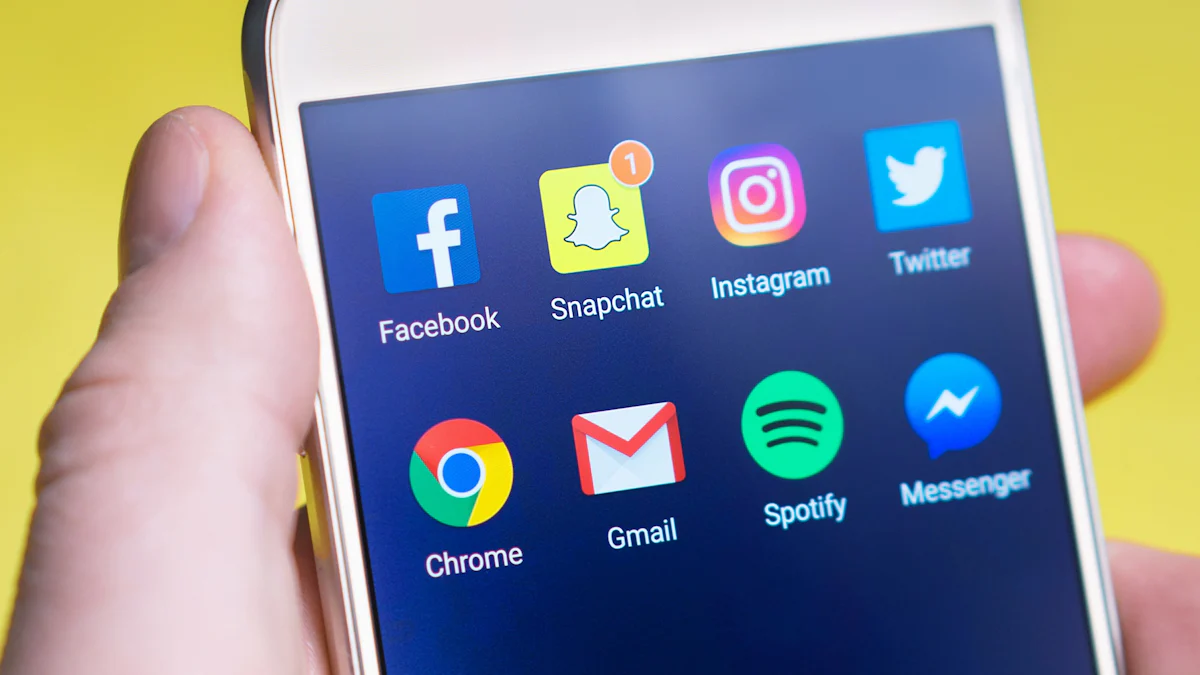Why Audience Engagement Drives Social Media Success

When you engage with your audience on social media, you’re doing more than just starting a conversation. You’re building trust and forming meaningful relationships that keep people coming back. Audience engagement doesn’t just make your followers feel valued—it also boosts your brand’s visibility. Posts with high engagement reach more people, attract new followers, and create loyal customers. In today’s digital world, connecting with your audience is essential for standing out and growing your online presence.
What Is Social Media Engagement?
Defining Social Media Engagement
Social media engagement refers to the interactions your audience has with your brand on platforms like Facebook, Twitter, and LinkedIn. It’s a broad term that includes any action someone takes to connect with your content—whether they’re liking a post, leaving a comment, or sharing it with their followers. Think of it as a two-way conversation. You’re not just posting content; you’re inviting your audience to respond and interact.
Experts often describe social media engagement as both a process and a measurement. On one hand, it’s about building relationships and communicating with your online community. On the other, it’s a way to track how effective your social media presence is across different platforms. Every like, comment, and share tells you something about how your audience feels about your content.
Key Metrics to Track Engagement
Tracking the right metrics is essential to understanding your engagement rate and improving your social media strategy. Here are some of the most important ones to keep an eye on:
Likes, Comments, and Shares
These are the bread and butter of social media engagement. Likes and reactions show how much your audience enjoys your content. Comments go a step further, reflecting deeper interaction and interest. Shares are especially valuable—they indicate that your audience finds your content so compelling they want others to see it too.
Click-Through Rates (CTR)
Click-through rates measure how often people click on links in your posts. This metric is crucial for understanding how effective your calls to action are. Whether you’re directing people to a blog, product page, or video, a high CTR means your content is driving traffic where you want it to go.
Mentions and Direct Messages
Mentions and direct messages are often overlooked, but they’re powerful indicators of engagement. When someone tags your brand in a post or sends you a message, it shows they’re actively thinking about your business. These interactions can help you build stronger relationships and even uncover valuable feedback.
By focusing on these metrics, you can get a clearer picture of how well your social media presence is resonating with your audience. The more you understand their behavior, the better you can tailor your content to keep them engaged.
Why Engage With Your Audience on Social Media?
Builds Trust and Relationships
When you engage with your audience on social media, you’re not just exchanging likes or comments—you’re building real connections. People value meaningful engagement because it feels personal and authentic. This kind of interaction fosters trust, which is the foundation of strong relationships.
- Engagement creates mutually beneficial relationships. Your audience feels heard, and you gain their loyalty.
- Trust grows when people see you actively participating in conversations and responding to their needs.
- Strong relationships lead to financial sustainability and even improve how your brand is perceived.
By showing your audience that you care about their opinions and experiences, you create a bond that keeps them coming back. This is the importance of engagement—it’s not just about numbers; it’s about creating lasting connections.
Boosts Visibility and Reach
Algorithmic Advantages of Engagement
Social media platforms reward content that sparks interaction. When your posts get a high engagement rate—likes, shares, or comments—the algorithm takes notice. It sees this as a sign of quality and relevance, pushing your content to more people. This snowball effect can significantly increase your visibility.
- Posts with high engagement rates are prioritized by algorithms, reaching a broader audience.
- Engaged audiences are more likely to interact with your calls to action, further boosting your reach.
The more you engage with your audience, the more the algorithm works in your favor, helping you grow organically.
Organic Growth Through Sharing
Engagement doesn’t just help with algorithms—it also encourages your audience to share your content. When people share your posts, they’re introducing your brand to their own networks. This kind of organic growth is invaluable.
| Engagement Strategy | Impact on Organic Growth |
|---|---|
| Share behind-the-scenes content | Connects the audience to the brand, creating authenticity and encouraging sharing. |
| High-quality, engaging content | Increases likelihood of shares, expanding reach and improving search engine rankings. |
| Positive customer interactions | Builds trust and enhances brand reputation, leading to more organic shares and customer advocacy. |
By focusing on creating shareable content and fostering positive interactions, you can turn your audience into brand ambassadors.
Drives Conversions and Sales
Turning Engagement Into Revenue
Engagement isn’t just about visibility—it directly impacts your bottom line. A high engagement rate often translates to more conversions and sales. When your audience feels connected to your brand, they’re more likely to take action, whether it’s clicking a link, signing up for a newsletter, or making a purchase.
| Statistic | Value |
|---|---|
| Revenue increase for organizations engaged in social media selling | 61% increase |
| Average lead generation increase for companies with strong social media | 17% more leads |
| Conversion rate for landing pages shared on social media | 2% (vs. 0.5% for email) |
| Customer retention rate for brands with strong social media engagement | 23% higher |
By engaging with your audience on social media, you’re not just building relationships—you’re driving measurable results.
The Role of Social Proof
Social proof plays a huge role in purchasing decisions. When people see others engaging with your brand, they’re more likely to trust you. Reviews, testimonials, and recommendations from friends or family can make all the difference.
- Nearly 70% of consumers consider product reviews before making a purchase.
Benefits of Strong Social Media Engagement

Increased Brand Loyalty
Building a Community Around Your Brand
When you build an engaged audience, you’re creating more than just followers—you’re fostering a community. People love to feel like they’re part of something bigger, and social media is the perfect place to make that happen. Brands like Starbucks and LEGO have mastered this by creating spaces where their fans can connect. For example:
- Starbucks’ “Leaf Rakers Society” Facebook group celebrates fall and Starbucks products with over 43,000 members.
- LEGO engages Adult Fans of LEGO (AFOLs) through Reddit and forums, encouraging collaboration and creativity.
These communities don’t just boost brand awareness; they create loyal advocates who stick with your brand for the long haul.
Encouraging Repeat Interactions
Loyalty grows when your audience keeps coming back. Social media engagement makes this possible by keeping your brand top of mind. Every like, comment, or share strengthens the connection between you and your audience. Organic advocacy, like social sharing, is especially powerful—it shows that your audience values your content enough to recommend it to others.
Research shows customer engagement doesn’t always lead to immediate financial benefits, but it’s a key driver of long-term loyalty.
Better Audience Insights
Learning From Feedback and Comments
Your audience’s feedback is a goldmine of information. When you analyze comments and messages, you can uncover what they love, what they don’t, and what they want more of. According to Microsoft, 77% of customers view brands more favorably when they ask for and act on feedback. This not only improves your content performance but also shows your audience that you value their opinions.
Identifying Trends and Preferences
Social media engagement gives you a front-row seat to your audience’s preferences. Tools like engagement rate tracking, post tagging, and competitor benchmarking help you identify what works and what doesn’t. For example, analyzing shares and brand mentions can reveal which themes resonate most with your audience. This insight allows you to refine your strategy and stay ahead of trends.
Higher ROI on Social Media Efforts
Maximizing Content Impact
A strong engagement rate means your content is hitting the mark. When your audience interacts with your posts, it signals that your campaigns are effective. For instance, a Facebook campaign with a 2.5% engagement rate outperforms the median of 1.2%, showing strong content performance. This kind of success translates into better ROI for your efforts.
Reducing Ad Spend With Organic Reach
Organic engagement reduces the need for paid ads. When your audience shares your content, it reaches new people without costing you a dime. This not only increases brand awareness but also builds trust with potential customers. By focusing on organic growth, you can save on ad spend while still achieving impressive results.
Actionable Strategies to Improve Social Media Engagement

Create Content That Resonates
Understand Your Audience’s Needs
To create content that truly connects, you need to know what your audience cares about. Start by analyzing their preferences, interests, and pain points. Use tools like polls or surveys to gather insights directly from them. When you understand their needs, you can craft posts that feel personal and relevant. For example, if your audience loves behind-the-scenes content, share a sneak peek of your creative process. This approach not only grabs attention but also builds trust.
Use Storytelling to Build Connections
Storytelling is one of the most effective content strategies for engaging your audience. People love stories that feel authentic and relatable. Share customer testimonials or personal experiences to show the human side of your brand. For instance:
- Stories about overcoming challenges resonate deeply and encourage interaction.
- Captivating introductions hook your audience and make your posts stand out in crowded feeds.
When you use storytelling, you invite your audience to connect emotionally with your brand. This connection fosters loyalty and keeps them coming back for more.
Interact With Your Audience
Respond to Comments and Messages
Engagement is a two-way street. When someone comments on your post or sends you a message, take the time to respond. A simple reply can make your audience feel valued and appreciated. Monitor your social media mentions regularly and join conversations where your brand is tagged. This active participation shows that you’re listening and care about their input.
Host Live Events or Q&A Sessions
Live events are a fantastic way to interact with your audience in real time. Hosting a Q&A session, for example, allows them to ask questions and engage directly with you. Here’s how it works:
| Event Engagement Ideas | Description |
|---|---|
| Q&A Sessions | Facilitate Q&A segments, allowing attendees to ask questions and engage directly with speakers. |
These events create a sense of community and give your audience a chance to connect with your brand on a deeper level.
Leverage Platform-Specific Features
Use Polls, Stories, and Reels
Social media platforms offer unique features that can boost engagement. Polls, stories, and reels are particularly effective. For example:
| Format | Average Engagement Rate | Types of Engagement |
|---|---|---|
| Stories | 1% to 7% | Direct Responses, Swipe-Ups, Story Views |
| Reels | 2% to 8% | Likes, Comments, Shares, Saves |
These tools encourage interaction and keep your audience engaged with fresh, dynamic content.
Experiment With Hashtags and Trends
Hashtags and trends can help you reach a wider audience. Use popular hashtags relevant to your niche to increase visibility. Don’t be afraid to jump on trending topics, but make sure they align with your brand’s voice. Experimenting with these features can help you discover what resonates most with your audience.
Maintain Consistency in Posting
Consistency is one of the most important factors in building a strong social media presence. When you post regularly, your audience knows when to expect new content, which keeps them engaged and coming back for more. But staying consistent can feel challenging, especially if time and resources are limited. So, how do you make it work? Let’s break it down.
Analyze Data to Optimize Timing
Posting at the right time can make a big difference in how your content performs. By analyzing your data, you can figure out when your audience is most active and likely to engage. For example, a study by Sprout Social found that brands posting on Facebook during optimal times saw a significant boost in engagement. On the other hand, CoSchedule reported that shifting Instagram posting times only led to a marginal increase. This shows that timing matters, but it’s not the only factor—your content and audience preferences play a huge role too.
| Study Source | Finding |
|---|---|
| CoSchedule | A brand shifting its Instagram posting time saw only a marginal increase in engagement. |
| Sprout Social | A brand's Facebook posts moved to optimal times based on audience data saw a significant boost. |
| General Insight | Timing is important but not the only factor; content type and audience also matter. |
Use tools like social media analytics or scheduling platforms to track engagement patterns. Once you know what works, you can plan your posts to maximize visibility and interaction.
Stick to a Regular Schedule
A consistent posting schedule builds trust and credibility. When your audience sees you showing up regularly, they perceive your brand as reliable and authentic. Plus, social media algorithms favor accounts that post consistently, which means better visibility for your content.
Here’s why consistency matters:
- It fosters trust and credibility with your audience.
- It enhances visibility, as algorithms reward regular engagement.
- It strengthens your brand identity through consistent messaging and visuals.
To stay on track, create a content calendar. This helps you plan ahead and avoid last-minute stress. Even if you’re short on time, batching content or using scheduling tools can keep your posts consistent. Remember, it’s not about posting every day—it’s about showing up regularly and delivering value.
Engaging with your audience on social media isn’t just a nice-to-have—it’s the backbone of your online success. When you prioritize meaningful interactions, you build trust, boost visibility, and create loyal communities that stick with your brand. Studies show that engagement transforms social media into a two-way communication channel, making your audience feel valued and connected.
The benefits go beyond likes and shares. High engagement levels help you gain insights into your audience’s preferences, tailor your strategies, and foster long-term loyalty. Brands like GoPro and Fender have proven that focusing on engagement can lead to measurable improvements, from customer retention to increased satisfaction.
So, why wait? Start implementing strategies like storytelling, interactive content, and consistent posting today. With time and effort, you’ll see measurable improvements in your social media performance and build a foundation for lasting success.
FAQ
What is the best way to increase social media engagement?
Focus on creating content that resonates with your audience. Use storytelling, ask questions, and post consistently. Don’t forget to interact—reply to comments, host live sessions, and use platform-specific features like polls or reels. Engagement thrives on genuine connections.
How often should I post on social media?
Post regularly, but quality matters more than quantity. Analyze your audience’s activity to find the best times. For most platforms, 3–5 posts per week work well. Use a content calendar to stay consistent without overwhelming your followers.
Why is engagement more important than follower count?
Engagement shows how much your audience values your content. A smaller, engaged audience is more likely to convert into loyal customers than a large, inactive following. It’s better to have 1,000 engaged followers than 10,000 who never interact.
How can I measure my social media engagement?
Track metrics like likes, comments, shares, and click-through rates. Use tools like Google Analytics or platform insights to monitor performance. Engagement rate = (Total interactions ÷ Total followers) × 100. This formula helps you see how well your content connects with your audience.
Can I boost engagement without spending money?
Absolutely! Focus on organic strategies like responding to comments, sharing user-generated content, and using trending hashtags. Create shareable posts and encourage your audience to participate in polls or challenges. Authenticity and consistency go a long way in driving free engagement.
💡 Pro Tip: Experiment with different content types—videos, memes, or infographics—to see what your audience loves most!
See Also
10 Effective Strategies for Engaging Audiences at 2025 Events
Essential Audience Engagement Tools for 2025 You Should Explore
Crafting Compelling Social Media Content for 2025 Success
